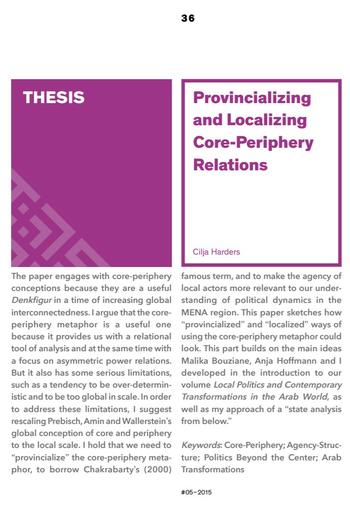Provincializing and Localizing Core-Periphery Relations
Cilja Harders – 2015
The paper engages with core-periphery conceptions because they are a useful Denkfigur in a time of increasing global interconnectedness. I argue that the coreperiphery metaphor is a useful one because it provides us with a relational tool of analysis and at the same time with a focus on asymmetric power relations. But it also has some serious limitations, such as a tendency to be over-deterministic and to be too global in scale. In order to address these limitations, I suggest rescaling Prebisch, Amin and Wallerstein's global conception of core and periphery to the local scale. I hold that we need to "provincialize" the core-periphery metaphor, to borrow Chakrabarty's (2000) famous term, and to make the agency of local actors more relevant to our understanding of political dynamics in the MENA region. This paper sketches how "provincialized" and "localized" ways of using the core-periphery metaphor could look. This part builds on the main ideas Malika Bouziane, Anja Hoffmann and I developed in the introduction to our volume Local Politics and Contemporary Transformations in the Arab World, as well as my approach of a "state analysis from below."
